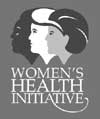

"We
have a social
responsibility to prepare
more women and
minorities as biomedical
and health care
researchers because
people tend to study
those issues they
believe are important,
and we tend to look
at those issues
through our
own perspective."
—Dr. Ora Strickland

"You
must be truthful
with your research subjects
because you want that
in return from them.
You're developing
a relationship that
requires honesty,
confidentiality,
and reliability
to ensure that you
present that person's
story as they see it."
—Dr. Shirley Quarles
By Pam Auchmutey
The English poet John Keats wrote, "Nothing ever becomes real till it is experienced." No words could be truer for Emory nursing professor Ora Strickland, PhD, RN, FAAN. In planning a study of coronary disease among African-American women, Strickland and a colleague differed over whether to ask each participant to do a CT scan. Strickland underwent a CT scan herself and wound up in the emergency room after suffering an allergic reaction to the dye.
"I decided then and there we couldn't do this," Strickland remembers. "The women in our study were premenopausal, and we didn't know if some of them might be pregnant. I didn't want to submit them to anything radioactive in the protocol. There were other ways to get the information we needed, even if we had to go through more hoops."
Her brush with the emergency room offers a real-life example of her No. 1 rule in conducting and teaching research: "Never ask your research subjects to do something that you wouldn't do yourself."
It's a philosophy that Strickland upholds whether working with colleagues or teaching advanced-degree students as professor of family and community nursing in the Nell Hodgson Woodruff School of Nursing. It is deeply rooted in her own training as an expert in nursing research, maternal and child health, and parenting, and in her efforts to recruit more women and minorities for major health studies.
Seeing with new eyes
As a nursing undergraduate in her native North Carolina, Strickland took her first research course and was immediately hooked. "My instructor made research seem so simple and clear," she says. "She was the first one who taught me the idea of studying those things that affect the well-being of people the most. I could see so many potential areas of study to improve the care we give to people in this country."
When Strickland completed her doctorate at age 28, she became one of the first nurses in the state and among the youngest nurses in the nation to hold a PhD. She also came of age professionally as women and minorities began to push for more research to improve their own health. The issue came to a head in the 1980s when a study commissioned by Congress showed that the lion's share of health research dollars was awarded for studies of men.
The reasons for this are rooted in social history. At the turn of the 20th century, the average life expectancy for women was 45 years. By that age, most women had gone through childbirth but didn't live long enough to experience menopause and the diseases now associated with aging. Prior to the late 1980s, most health studies had been conducted for and by men, and the few studies of women focused on reproduction.
"One of the reasons scientists have not focused on women's health problems is that we're difficult to study because of our menstrual cycles," says Strickland. "We know a lot about the physiology of women associated with pregnancy, but we don't know a lot about women after they begin or stop their periods. Screening women can be very expensive because you have to make sure they're not pregnant when they begin a study. And if a woman does become pregnant, the study may require her to drop out to avoid risk to her unborn child."
Recruiting minorities for health studies has also proved difficult. Many fear participating in research, especially after the notorious Tuskegee study of African-American men with syphilis was halted in the 1970s.
"A key role of an investigator is to study those problems that affect the population most by causing the most pain and suffering and costing the most money," Strickland explains. "If you are a man, you are likely to focus on those things or relate to those problems that affect you. As women, we have the same bias. The problem is that we don't have enough women or minorities trained as high-level research scientists to compete for research funds.
"We have a social responsibility to prepare more women and minorities for roles as biomedical and health care researchers because people tend to study those issues they believe are important, and we tend to look at those issues through our own perspective."
In 1989, Strickland joined others to find a solution as an appointee to a women's health advisory committee led by Bernadine Healy, MD, then-director of the National Institutes of Health. Among its recommendations, the committee called for more research among older women. A major result was the Women's Health Initiative (WHI), a 15-year NIH study of heart disease, breast and colon cancer, and osteoporosis—four of the leading causes of death and disability among postmenopausal women. Begun in 1991, the WHI is the largest women's health study in the nation with 162,000 participants, 18% of whom are minorities, at more than 40 sites.
Strickland is a co-principal investigator with colleagues from the schools of Medicine and Public Health, who are following nearly 4,000 women from Atlanta and Macon, Georgia. The Emory study site is located in nearby Decatur, Georgia, to provide easy access to public transportation. It also provides taxi and bus fare and child-care referrals to assist low-income women and encourage them to remain in the study.
"We have to consider the fact that it costs money for women to participate in the WHI study," Strickland says. "Some of our participants are raising their grandchildren. If they can't afford baby-sitting, they can't afford to be in the study. Unless we include women from a variety of backgrounds, our knowledge is limited and can't be applied to women who are not in the study."
Treading carefully
Strickland's beliefs were put to the test in a recent study of premenstrual syndrome (PMS) in women. During the most intense phase of the study, Strickland wanted to collect blood or urine samples every four days. But asking women to come in so often to draw blood proved impractical and placed a financial burden on many. The other option—collecting urine every hour for 24 hours—was an embarrassing prospect for women who worked since the samples had to be refrigerated. To solve the problem, Strickland eliminated a hormone variable from the study "because it just wasn't practical."
She is now in the midst of writing an article about the PMS study for publication by next year. She originally planned to write the article several months ago but postponed publication when she opted to re-examine all of the data from the study's 1,500 participants with the help of an outside group of women scientists.
"When you complete a study, you're expected to disseminate the results to the scientific community and to the public in a way that is balanced socially and scientifically," Strickland says. "In this case, I thought it was important to bring in other people with a fresh eye to help me interpret the data in an unbiased manner.
"Every researcher is cognizant of the fact that the results of their research can impact lives," she adds. "If you fall down in any one area, you have failed as an investigator."
A productive partnership
Shirley Quarles, PhD, RN, wants to make sure that never happens to her. For the past two years, Quarles has collaborated with Strickland as the nursing school's first postdoctoral fellow, and the experience has been invaluable. She is working on the WHI and PMS studies and a home intervention program for sickle cell patients, to be managed by nurses at Crawford Long Hospital. Both are partners in a new study of post-traumatic stress disorder (PTSD) among female veterans served by the Atlanta Veterans Affairs Medical Center near Emory. They are using VA funding to examine the relationship between PTSD and medical comorbidities in women. In other study phases, Quarles will look at PTSD rates in the same population and co-direct with Strickland the Atlanta site of a national study launched by the Post-traumatic Stress Disorders Center for Veterans Health Care in White River Junction, Vermont.
Participants from age 20 to 65 will be tapped from the 310 Atlanta-area female veterans diagnosed with PTSD. Just as important, the study will examine a health problem typically associated with men in combat, with the hope that the results can be applied to women in the general population. It will also examine other causes of female PTSD, such as sexual and physical abuse, witnessing a horrific crime, or losing a close loved one during childhood.
"In the past, people have thought about PTSD in male veterans as it relates to being in a war zone, but there has been very little emphasis on female war veterans," Strickland says. "We don't know what other factors that women experience in the military may contribute to PTSD, such as rape or sexual discrimination in a male-dominated situation. We also believe there may be a number of women with partial PTSD who have not been identified or treated."
Quarles attributes her interest in studying PTSD to the growing number of female veterans and her own military service as a lieutenant colonel in the US Army Reserve. "Because more female veterans are seeking health care at VA medical centers, we have a responsibility to cultivate a health care environment that addresses their typical and special medical needs. Post-traumatic stress disorder in women is a growing concern. We have not addressed that as aggressively as we should."
The right niche
Like Strickland, Quarles is indebted to those who have inspired and guided her nursing career along the way. She was working on her doctorate in research education at North Carolina State when her adviser told her she had the makings of a research scholar. "The light bulb just went on," says Quarles. "She got me excited about making a difference in people's lives through research. That refocused me to look at research as a career. But even at the doctoral level, I knew I had to learn more to produce the scholarly work I want to produce."
For that reason, Quarles turned to the School of Nursing at Emory and to Ora Strickland. "Her experience gives me a better shot at limiting problems when I have the opportunity to move through a research project as a PI or co-PI," she says.
Quarles has learned more about quite a number of things. Researching the literature thoroughly to avoid duplication and bring new light to current theory. Making ethical decisions. Managing a project and keeping accurate records. Developing proper protocols and appropriate processes. Collecting and reporting data accurately. And building trust.
"You must be truthful with your research subjects because you want that in return from them," Quarles says. "You're developing a relationship that requires honesty, confidentiality, and reliability to ensure that you present that person's story as they see it."
Building those relationships reminds Quarles of the neighbor ladies who gathered on her mother's front porch in North Carolina to chat over lemonade and iced tea. "I used to think, 'What are they talking about?' Now I understand."
Toward that end, Quarles and Strickland are working to develop a PTSD research team involving as many female clinicians as possible in the belief that study participants will find it easier to share their experiences with other women. It's a method that should serve Quarles well at the VA Medical Center, where she will continue her work on women's health issues after her fellowship with Strickland ends this year. "I'm excited. I really am. I've found my niche."
 A
New Era in Women's Health
A
New Era in Women's Health